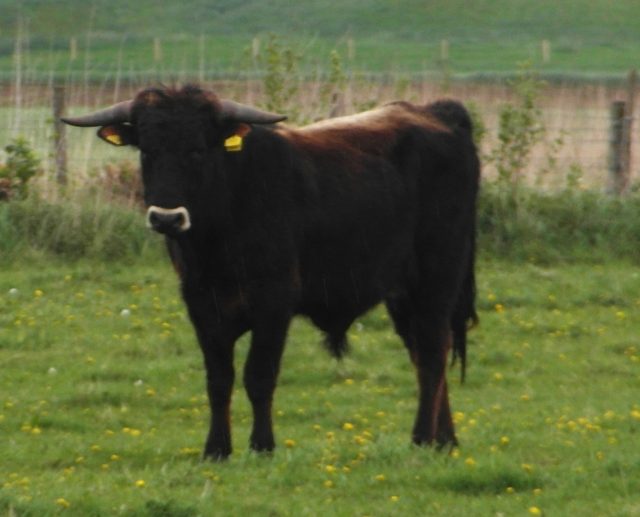Type the name of the breed you're looking for below
[wpdreams_ajaxsearchlite] Don't see the breed your're looking for? Click here and let us know!
Sayaguesa cattle
| Place of Origin | Spain |
| Origin | The Sayaguesa Cattle, also called Zamorana Cattle, is an ancient, aurochs-like cattle breed from Sayago in the province of Zamora in the Spanish autonomous community of Castile and León. |
| Purpose | Beef production and draught (work). |
| Appearance | Height at withers is around 1,65 m in bulls and around 1,45 m in cows, sexual dimorphism is thus relatively strong. Sayaguesa Cattle is long-legged. The bulls are black and often have a light eel stripe. The cows often are only slightly lighter than the bulls, but there are some wild type coloured brown Sayaguesa cows left. Also, they have the whitely coloured mouth of the aurochs. Sayaguesa is a long-legged breed, which also has a swung backline, which resembles those of the aurochs. Furthermore, Sayaguesa does not have the short calf-like face of many domestic cattle breeds. |
| Horns | The horns are aurochs-like and swung forwards especially in bulls. |
| Cows Average Weight | 600 - 700 kg (1,323 - 1,543 lbs) |
| Bulls Average Weight | 1,000 – 1,100kg (2,205 - 2,425 lbs.) |
| Other Considerations | The breed is know to be hardy, robust and frugal and therefore needs no shelter or barn during the year. Traditionally, Sayaguesa are used as working and draft animals. There are comparably few animals left, so the breed is listed as endangered since 1997. Because primitive breeds like this have a low economical rentability, farmers often do not use them any more or cross them with more productive breeds, which endangers the few aurochs-like phenotypes left. Because of its resemblance to its wild ancestor, Sayaguesas are used in certain nature conservation and rewilding projects. For example, Sayaguesas are used by the Arbeitsgemeinschaft Biologischer Umweltschutz in Germany. Also Stichting Taurus uses this breed, integrated in TaurOs Project. This project aims to breed a type of cattle which resembles the aurochs closely in phenotype, genetics and ecology by crossing primitive breeds like this one, Pajuna Cattle, Maremmana primitivo or Tudanca Cattle. |



